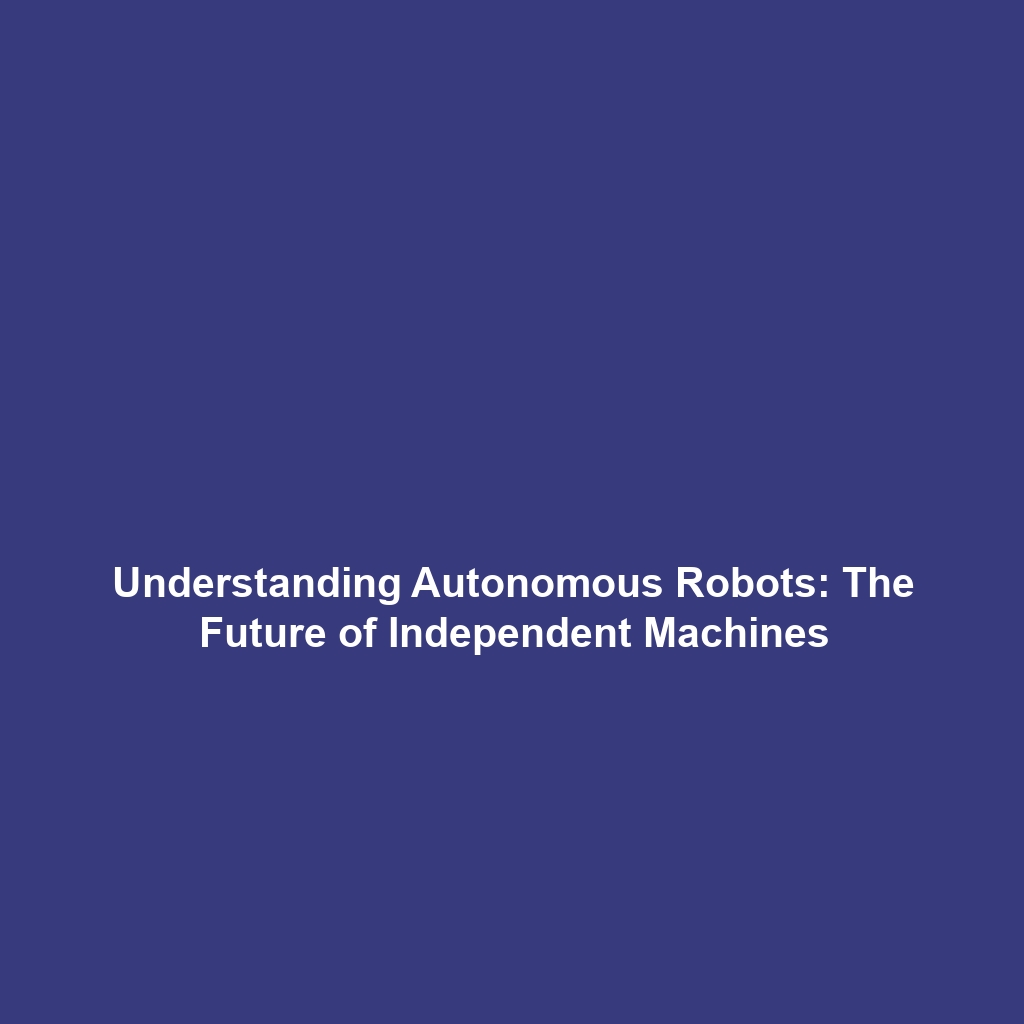AI Algorithms Enabling Path Planning and Obstacle Avoidance in Autonomous Robots
Introduction
In the realm of autonomous robots, the capability for efficient path planning and effective obstacle avoidance is crucial. Leveraging advanced AI algorithms, these technologies enable robots to navigate complex environments, making real-time decisions that enhance their operational efficiency. The significance of these algorithms lies not only in improving the autonomy of robots but also in ensuring safety and reliability across various applications, from industrial settings to consumer uses. Understanding how these AI algorithms function is essential for the future of robotics.
Key Concepts
Path Planning
Path planning involves developing a route for an autonomous robot to follow from a specified start point to an endpoint. Several AI algorithms, such as A (A star), Dijkstra’s algorithm, and Rapidly-exploring Random Trees (RRT), are commonly utilized to facilitate this process. Each algorithm has unique advantages depending on the complexity of the environment and the required speed of computation.
Obstacle Avoidance
Obstacle avoidance is a set of strategies that enable robots to navigate around physical barriers in their path. Techniques such as potential fields, reactive planning, and the use of sensory data play a vital role in forming responsive systems. Implementing these strategies ensures that autonomous robots can adapt to unforeseen changes in their surroundings, significantly improving their operational capabilities.
Applications and Real-World Uses
The applications of AI algorithms in path planning and obstacle avoidance are extensive, demonstrating the relevance of these technologies within the field of autonomous robots. Here are some notable examples:
- Healthcare: Surgical robots use precise path planning to navigate within the human body, avoiding critical structures.
- Logistics: Warehouse robots (like those developed by Amazon) employ sophisticated algorithms to navigate through dynamic environments while avoiding obstacles such as human workers and machinery.
- Autonomous Vehicles: Self-driving cars rely heavily on real-time path planning and obstacle avoidance to navigate streets and highways safely.
Current Challenges
Despite significant advancements, there are notable challenges associated with AI algorithms for path planning and obstacle avoidance in autonomous robots. The main issues include:
- Computational Complexity: Algorithms can become inefficient in highly cluttered environments.
- Real-Time Processing: Achieving real-time decision-making demands extensive computational resources.
- Sensor Reliability: Dependence on sensory data can lead to miscalculations due to sensor errors or environmental factors.
Future Research and Innovations
Future research aims to refine AI algorithms to enhance their capabilities. Innovations may include:
- Deep Learning Integration: Incorporating deep learning to improve environmental perception and decision-making.
- Swarm Robotics: Developing collaborative algorithms that allow multiple robots to operate cohesively in shared environments.
- Improved Sensory Technologies: Advancements in sensors that provide better accuracy and reliability for navigation.
Conclusion
AI algorithms enabling path planning and obstacle avoidance are vital components driving the evolution of autonomous robots. As these technologies continue to advance, they pave the way for safer and more efficient robotics applications across various industries. For more insights on robotics and its associated technologies, consider exploring our other articles on autonomous vehicles and robot sensors and navigation.
